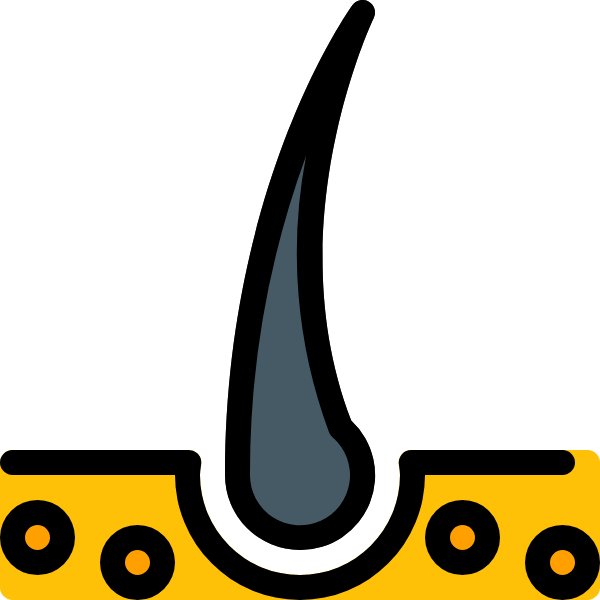Kyleena is a type of intrauterine device (IUD) that has been used for contraception since 2015. Many women are asking if this form of birth control can cause hair loss and, unfortunately, the answer isn’t simple. In this article, we’ll look at what science says about whether or not Kyleena contributes to hair loss in women who use it.
The subject of baldness is one that affects both sexes equally, but it can be particularly distressing for women because it’s seen as socially unacceptable. It’s no wonder then why so many people want to know if there’s any connection between Kyleena and female hair loss – after all, nobody wants their birth control method to make them lose their locks! Keep reading to find out more about the potential link between Kyleena and hair loss.
What Is Kyleena?
Kyleena is a type of contraceptive implant, which is inserted into the arm and releases hormones that prevent pregnancy. It’s a long-acting reversible contraception (LARC) method, meaning it can stay in place for up to five years before needing replaced or removed. The device itself is about 4 cm long and contains progestin hormone levonorgestrel. After insertion, Kyleena works by releasing small amounts of this hormone directly into the body to stop eggs from being released during ovulation.
The effectiveness of Kyleena as a contraceptive has been proven with numerous studies showing its efficacy rate at over 99%. This means fewer than 1 out of every 100 women who use Kyleena become pregnant each year. Moreover, there are very few side effects associated with using it; these include irregular bleeding, headaches, nausea and breast tenderness.
Knowing all this information about Kyleena gives us an understanding of how it works and how effective it is as a form of birth control. With this knowledge we can now look further into whether or not the implant may cause hair loss.
Does Kyleena Cause Hair Loss?
Moving on from what Kyleena is, it’s time to address the question of whether or not this hormonal IUD can cause hair loss. Although any type of medication or device has potential side-effects, many women have found that Kyleena does not lead to significant hair loss.
Research studies into how long-term use of a levonorgestrel-releasing IUD affects hair health show that there is no statistically relevant decrease in hair quality over time. Women who used this form of contraception for up to five years did not experience an increase in shedding or thinning compared with those using other forms of birth control such as condoms and diaphragms.
It is important to note, however, that individual experiences may vary when it comes to taking any kind of contraceptive method. If you are concerned about potential changes in your body due to taking Kyleena, speak to your doctor before making a decision. It’s also worth recognizing that some people do experience temporary hair loss while their bodies adjust to the hormonal levels provided by the device – if this happens, don’t panic as it should return back to normal after a few months. So now we’ve answered the question: Does Kyleena cause hair loss? The answer appears to be ‘no’. But what should you do if you still experience hair loss while taking Kyleena?
What Should You Do If You Experience Hair Loss While Taking Kyleena?
Have you ever wondered about the potential side effects of Kyleena? Hair loss is one possible outcome, and if it happens to you, then understanding how to deal with it can help.
So what should you do if hair loss occurs while taking Kyleena? Here are some tips that may be beneficial: * Schedule an appointment with your doctor as soon as possible. It’s important to rule out any underlying medical conditions or hormonal imbalances that could be causing the hair thinning. * Try adding more biotin-rich foods such as eggs, nuts, and whole grains into your diet. Biotin helps strengthen hair follicles which can reduce breakage and shedding over time. * Consider using a gentle shampoo specifically designed for chemically treated or damaged hair. These shampoos typically contain ingredients like panthenol, keratin, and other nourishing oils to help restore moisture balance in the scalp. * Massaging your scalp regularly with essential oils has been known to stimulate blood flow to the area promoting healthy growth of new hairs while protecting existing ones from damage.
Taking these steps will not only give you peace of mind but also provide long-term solutions towards preventing further hair loss due to Kyleena use. Even though it may feel overwhelming at times, don’t forget that there are many resources available online and offline that provide support throughout this process!
Conclusion
I understand that many of us are worried about Kyleena causing hair loss. But it’s important to remember that our bodies can react differently to different medications, and what works for one person doesn’t always work for another. It’s like a game of chance; you might get lucky or unlucky when it comes to side effects. That being said, if you do start experiencing any kind of hair loss while taking Kyleena, be sure to speak with your doctor right away. They may be able to help determine the cause and provide an alternative solution. Thinking about potential risks before starting any new medication is key – just like they say: forewarned is forearmed!

